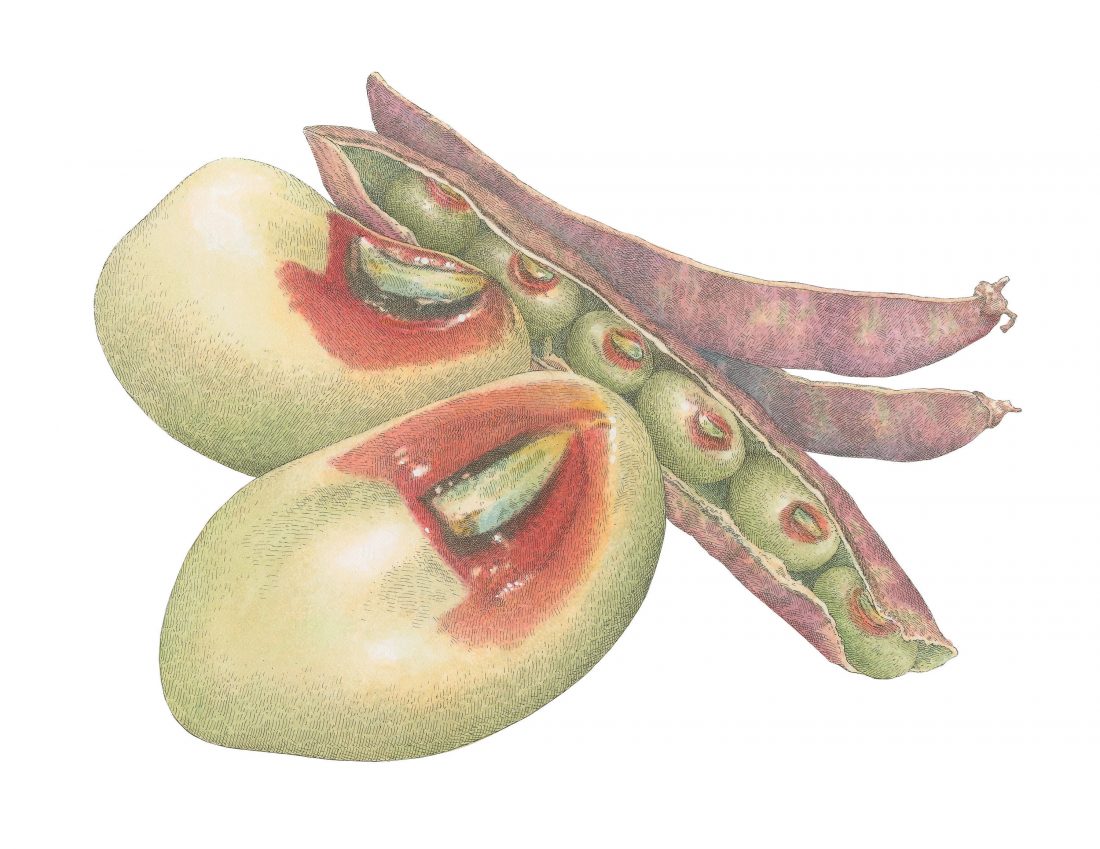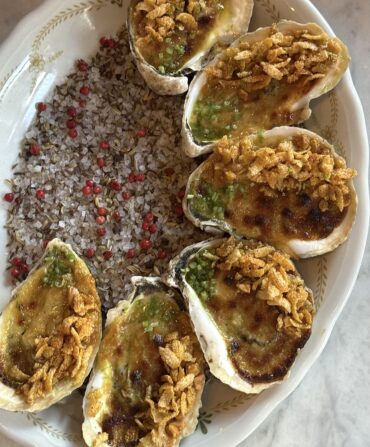When field peas hit vegetable plates at Southern restaurants, you know summer has officially arrived. This season, expect to see dishes dotted with one pea in particular—last year, pink-eyed purple-hulls won a field-pea taste test in Charleston, South Carolina, which was judged by chefs, academics, and growers from around the country. Alex Harrell, the owner and executive chef of Angeline in New Orleans, isn’t surprised the variety came out victorious. “I love all types of peas, but pink-eyed peas have always been my favorite,” he says. “My grandmother grew them on her farm near my hometown of Dothan, Alabama, and they were a regular on her table throughout my childhood.” Like many other varieties of these legumes, pink-eyes—named for the blush-colored ring around the peas’ “eyes”—were brought from West Africa to the South, where they thrived in the hot, humid climate, bolstered the soil with nitrogen, and nourished people and livestock alike (hence the collective term cowpeas). “They have a touch of sweetness and are less starchy and earthy than crowders and black-eyed peas,” Harrell says. When shopping for pink-eyed peas, select only those that are firm to the touch and brightly colored. Open the container and take a whiff; fresh peas are high in protein, so they sour quickly. At home, they’ll keep just a few days in the refrigerator, so stick them in the freezer if you don’t plan to cook them right away. Harrell’s favorite preparation is to simmer the peas with a little bacon, garlic, onion, and herbs, and serve them alongside seafood just as his grandmother taught him. “To this day,” he says, “I can’t help but compare all other peas that I eat to hers.”
Pink-Eyed Peas Three Ways

Simmered With Smoky Pork
“The gentle aromatics match the peas’ mild vegetal flavor. To me, there really is no better way to eat them.”
Chop 3 slices of bacon and place in a large saucepan over medium heat. Once the fat begins to render, add 1 diced yellow onion and 3 crushed garlic cloves. Sauté for about 5 minutes, then add 1 quart pink-eyed peas, 2 bay leaves, 3 sprigs of fresh thyme, 1 tsp. kosher salt, and a pinch of black pepper. Fill with enough water to just cover peas and bring to a boil. Reduce heat and simmer for 20 to 25 minutes until peas are tender. Strain and serve.
 Spooned Over Seafood
Spooned Over Seafood
“I love this relish with shrimp, grilled tuna, and especially flounder. The peas give it a pleasant sweetness.”
In a saucepan, simmer 1 tbsp. minced shallot and ½ tsp. minced garlic in 2 tbsp. white balsamic vinegar over medium heat until softened (about 5 minutes). Place mixture in a bowl and combine with 2 cups cooked pink-eyed peas, ¼ cup extra-virgin olive oil, ½ tbsp. each chopped parsley, chives, and oregano, ½ tbsp. lemon zest, and a pinch of red pepper flakes. Season to taste with salt and pepper.
 Blended Into a Spread
Blended Into a Spread
“This makes a great snack or meal. The peas contain just enough starch to make a creamy spread.”
Place 2 cups warm cooked pink-eyed peas into a food processor and pulse with 2 tbsp. each ricotta and extra-virgin olive oil (texture should be coarse). Transfer mixture to a bowl and stir in ½ tbsp. each chopped mint and parsley, ½ tsp. each toasted ground coriander, cumin seeds, and fennel seeds, ¼ tsp. smoked paprika, 1 tsp. hot sauce, and 1 tsp. lemon zest. Season to taste with salt and pepper, and serve with crostini and sliced radishes.








